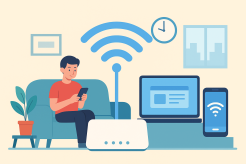Have the Digital News Subscriptions Lost Their Mind?

On following up on the current media spellbound supernatural powers of the subscription model. Hulu, ESPN, MoviePass, Amazon, name it we will subscribe!
As the print news model lost its faith and rekindles in the digital world, we look at the breakdown of their new pricing structure. Keep in mind that we are assessing this in comparison to the existing streaming digital model.
We realize that publications like the New York Times charge $20/month for their digital subscriptions. That means that people would have to spend hours a day reading the news and doing crossword puzzles to get in line with the current digital subscription models.
Some might find the pricing too low, some might find it fair. Bottom line is that it has no cap. Jessica Levin’s, The Information raised the bar to $40 per month. We understand though that the main difference between the free club (Facebook, Instagram, Youtube) and the paying clubs (The New York Times, Wall Street Journal) is that the former’s content is user-generated while the latter is producing or paying for content generation. Understandable, but not crazy about this structure considering that the print journal can be either free or $1.00 or can be found online for free.
So “people like paying for news”? No idea where that came from. Let us know if you do!
Related Posts

Tue, Dec 2, 2025 3:31 AM
SafetyHow to Keep Your Kids Safe Online Today
A clear, parent-friendly guide on protecting kids online. Learn essential digital safety habits, social media precautions, password protection, and practical tips for raising safe and confident young internet users.

Mon, Dec 1, 2025 6:35 AM
Internet Bundles Technology WifiAffordable Fixed Wireless Internet: What You Need to Know
Discover how fixed wireless internet works, its benefits and limitations, and why it’s becoming a top choice for homes and businesses.

Mon, Dec 1, 2025 5:21 AM
Internet BundlesThings to Watch Out For in a Cheap Unlimited Mobile Data Plan
Discover how to choose the best cheap unlimited mobile data plan. Learn about data speeds, deprioritization, hidden fees, coverage, hotspot limits, and more.

Fri, Nov 28, 2025 11:17 PM
cheap internet dealsThe Ultimate Guide to Internet Bandwidth
Learn how internet bandwidth works, how to optimize upload and download speeds, and get fast, reliable performance for your home network.

Fri, Nov 28, 2025 10:36 PM
cheap internet plansHow to Choose the Best Internet Plan Based on Your Household Size
Learn how to choose the best internet plan for your household size. Match speeds, connection types, and costs to your devices and daily usage for reliable home Wi-Fi.